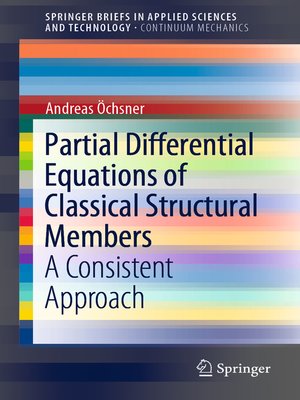Partial Differential Equations of Classical Structural Members
ebook ∣ A Consistent Approach · SpringerBriefs in Applied Sciences and Technology
By Andreas Öchsner

Sign up to save your library
With an OverDrive account, you can save your favorite libraries for at-a-glance information about availability. Find out more about OverDrive accounts.
Find this title in Libby, the library reading app by OverDrive.



Search for a digital library with this title
Title found at these libraries:
| Loading... |
The derivation and understanding of Partial Differential Equations relies heavily on the fundamental knowledge of the first years of scientific education, i.e., higher mathematics, physics, materials science, applied mechanics, design, and programming skills. Thus, it is a challenging topic for prospective engineers and scientists.
This volume provides a compact overview on the classical Partial Differential Equations of structural members in mechanics. It offers a formal way to uniformly describe these equations. All derivations follow a common approach: the three fundamental equations of continuum mechanics, i.e., the kinematics equation, the constitutive equation, and the equilibrium equation, are combined to construct the partial differential equations.






